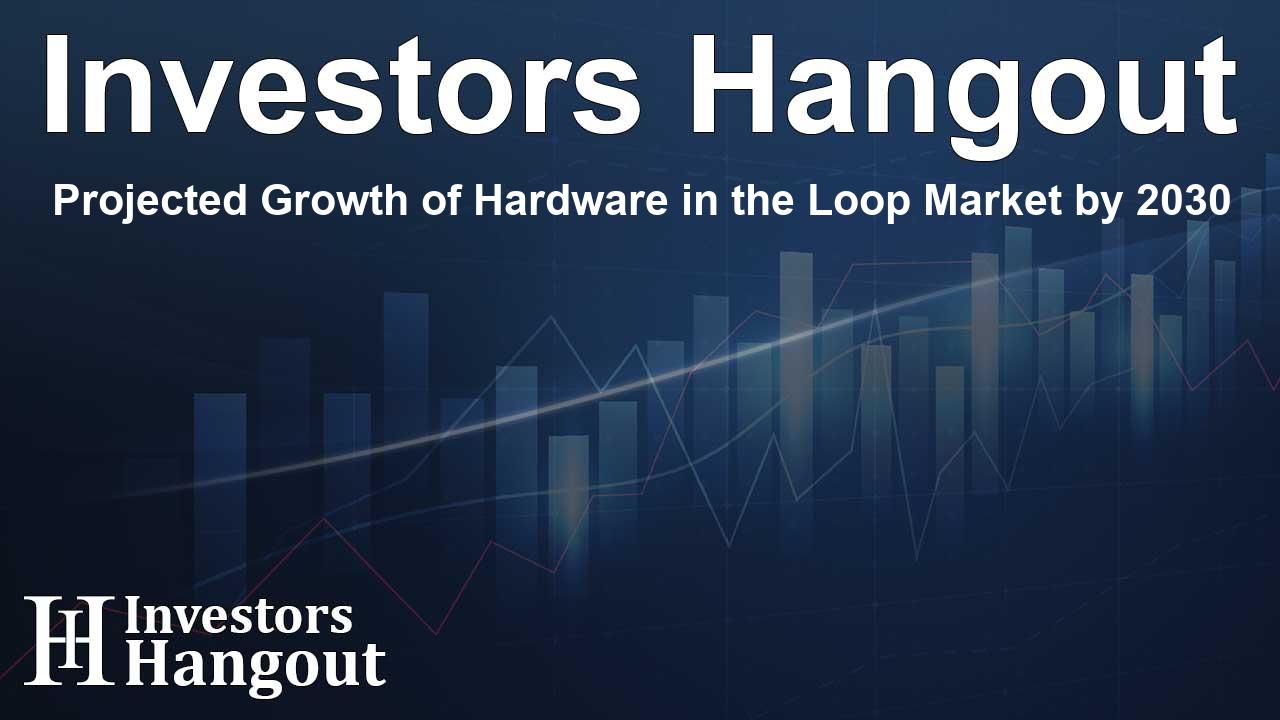Projected Growth of Hardware in the Loop Market by 2030

The Future of the Hardware in the Loop Market
The hardware in the loop market is on the verge of remarkable growth, expected to escalate from an estimated value of USD 1100.8 million in the near future to an impressive USD 1,784.4 million by the end of the decade. This translates to a compound annual growth rate (CAGR) of 10.1%, driving innovation across sectors like electric vehicles, robotics, and industrial automation.
Factors Leading to Market Growth
Several compelling factors underpin the growth of the hardware in the loop (HIL) market. A key driver is the enhanced complexity of modern vehicles, particularly with the integration of electric drivetrains and advanced driver assistance systems (ADAS). HIL plays a vital role in developing and testing electronic control units (ECUs), making it indispensable in the automotive sector. This need for rapid development cycles and compliance with safety standards positions HIL systems as essential tools for manufacturers.
Technological Advancements in Automotive
The automotive industry is witnessing a shift towards software-defined vehicles, bolstering the need for HIL systems. These systems enable automakers to conduct comprehensive testing and verification, ensuring that ECUs function correctly under various conditions. With the continuous evolution of autonomous vehicles, the reliance on HIL technology is only expected to increase.
Emerging Application Areas
The market is also expanding into new application areas such as power electronics and automation. The advent of Industry 4.0 promotes smart manufacturing processes, creating a growing demand for HIL systems in robotics. As businesses look for ways to improve efficiency and reduce costs, the economic evaluation of renewable energy systems will significantly enhance the market potential for HIL technologies.
Market Segmentation and Insights
Within the HIL market, the automobile sector is projected to dominate due to its critical need for testing and assurance in vehicle development. HIL is vital in verifying the functionality of increasingly complex automotive systems. This sector's focus on innovative solutions for testing protocols will greatly influence market dynamics.
Predicted Hardware Segment Dominance
The hardware segment, encompassing authentic sensors and control units, is anticipated to become the predominant offering in the HIL market. Test systems employing genuine hardware components provide realistic operational testing environments, which multiple industries favor for reliability. As needs evolve, so too will testing methods, transitioning to customized hardware configurations to meet specific testing requirements effectively.
Regional Insights: The Power of China in the HIL Market
China is positioned to lead the hardware in the loop market within the Asia Pacific region, thanks to its thriving automotive sector and investments in electric vehicle technology. This nation's aggressive expansion into automotive innovation exemplifies its commitment to becoming a powerful player in the HIL arena. Major Chinese automotive companies are forming joint ventures and investing substantially to enhance their manufacturing capabilities, exemplifying China's proactive approach to HIL system integration in their production processes.
This intensifying focus on electric vehicle advancement signifies that China's role in the market will only continue to grow, as continual investment fuels further development and requires superior testing solutions to support evolving technologies.
Competitive Landscape
A number of key players are significantly impacting the HIL market, including dSPACE GmbH, Emerson Electric Co., and Robert Bosch GmbH. These companies are recognized for their innovative solutions that enhance the efficiency and effectiveness of HIL systems across various industries. Their leading edge in research and development ensures a competitive market landscape where continual improvement is a constant goal.
Frequently Asked Questions
What is the projected value of the hardware in the loop market by 2030?
The hardware in the loop market is projected to reach USD 1,784.4 million by 2030.
What are the key drivers behind the growth of this market?
The growth is primarily driven by the complexities of modern automotive systems and the need for rigorous testing protocols.
Why is the automobile sector significant for the HIL market?
The automobile sector is significant due to the demand for testing electronic control units vital for modern vehicle functionalities.
How is China influencing the hardware in the loop market?
China is leveraging its investments in EV technology to lead the HIL market within the Asia Pacific region.
Who are the key players in the HIL market?
Key players include dSPACE GmbH, Emerson Electric Co., and Robert Bosch GmbH, among others.
About The Author
Contact Olivia Taylor privately here. Or send an email with ATTN: Olivia Taylor as the subject to contact@investorshangout.com.
About Investors Hangout
Investors Hangout is a leading online stock forum for financial discussion and learning, offering a wide range of free tools and resources. It draws in traders of all levels, who exchange market knowledge, investigate trading tactics, and keep an eye on industry developments in real time. Featuring financial articles, stock message boards, quotes, charts, company profiles, and live news updates. Through cooperative learning and a wealth of informational resources, it helps users from novices creating their first portfolios to experts honing their techniques. Join Investors Hangout today: https://investorshangout.com/
The content of this article is based on factual, publicly available information and does not represent legal, financial, or investment advice. Investors Hangout does not offer financial advice, and the author is not a licensed financial advisor. Consult a qualified advisor before making any financial or investment decisions based on this article. This article should not be considered advice to purchase, sell, or hold any securities or other investments. If any of the material provided here is inaccurate, please contact us for corrections.
